Special collections: Hebraica, Judaica & Semitics
History and scope of the collections
The Bodleian Library holds perhaps the best collection of Hebrew manuscripts in the world, alongside an extraordinarily rich collection of early Hebrew and Yiddish printed books. All fields of traditional Hebrew scholarship are represented in the collection.
The Ethiopic and Syriac collections are more modest, but both include individually significant items.
Hebrew
Early collection
In 1601 the Bodleian Library received its earliest manuscript accessions in Hebrew. The first catalogue of the library (1605) lists 58 books with titles in Hebrew script. They are mostly of Venetian origin, where Hebrew printing was then in its prime. The library’s founder, Thomas Bodley, took a personal interest in them. At the end of the catalogue, he added his own corrections in Latin of some misprints in Hebrew.
After Bodley’s death, the library continued to enrich the Hebrew collections. In 1692 it purchased the collections of Dr Robert Huntingdon and Professor Edward Pococke, the Regius Professor of Hebrew. Among the 212 manuscripts in the Huntingdon collection is the Mishneh Torah of Maimonides (1155–1204) with the author’s signature (MS. Huntingdon 80), attesting that the text had been corrected against the original.
19th and 20th centuries
The largest single purchase ever made by the library was the acquisition in 1817 of the manuscript collection which had belonged to the Venetian Jesuit, Matteo Luigi Canonici. The collection contains over 110 valuable Hebrew manuscripts, chiefly on vellum.
In 1829 the Bodleian bought the Oppenheimer Library, considered the most important and magnificent Hebraica collection ever accumulated. Rabbi David ben Abraham Oppenheimer (1664–1736) was the Chief Rabbi of Prague. During his lifetime he collected 780 manuscripts and 4,220 printed books in Hebrew, Yiddish and Aramaic, many of which are the only surviving copies.
Further significant collections of Hebrew manuscripts were added in 1848 and 1890. In 1848 the Library purchased the library of Heimann Joseph Michael, numbering 862 volumes and nearly 1,300 separate works.
The purchase of fragments from the Cairo Genizah, beginning in 1890, is the most recent acquisition of Hebrew manuscripts of major international importance. A genizah is usually a room attached to a synagogue used for storing texts which were worn out and had become unusable. In this case, the genizah was in the attic of the Ezra synagogue in Old Cairo, which held over 200,000 fragments in Hebrew, Judaeo-Arabic and Yiddish. These fragments are now dispersed in over 25 public and private libraries across the world. Cambridge has the majority of them (over 150,000), while 25,000 are in New York, 10,000 in Manchester and 5,000 each in the British Library and the Bodleian.
Yiddish
Yiddish became the spoken language of most Jews in Europe and beyond. However, historically it had an inferior status to Hebrew and was chiefly used to address women, children and males ignorant of Hebrew. Significantly, the first book printed in Yiddish (Cracow, 1534) is a translation of difficult phrases in biblical Hebrew. For the same reason, early books in Yiddish were badly printed and ephemeral, and so have survived, if at all, in very few copies. One of the few bibliophiles to collect these objects systematically was Rabbi David Oppenheimer (see above) so the Bodleian finds itself with a very important collection of early Yiddish printed books, in many cases holding the only surviving copy.
Later, because of its proletarian status, Yiddish was the natural choice of language for the propagation of socialism. In 1981, the Bodleian Library received the library of the US daily Yiddish newspaper Morning Freiheit, founded in 1922 by the Jewish section of the American Communist Party. This gave the library an extensive representation of the rich socialist literature of the later nineteenth-century and the first half of the twentieth.
Aramaic
Aramaic features prominently in the works described above as Hebrew, partly because they are similar languages and the authors change from one to the other even in mid-sentence. Additionally, the Bodleian possesses a unique series of documents in Aramaic written on leather. Nothing definite is known of their origin, but they were acquired in 1943–4. They are undated, but belong somewhere in the fifth century BC.
Ethiopic
The Bodleian's collection of Ethiopic manuscripts now contains some 130 items. James Bruce’s collection of 25 Ethiopic manuscripts, purchased by the library in 1843, is both artistically and textually out of the ordinary and features a rare text of Enoch. In 2002, an unusual illustrated seventeenth-century manuscript of a Marian text, Arganona weddase (‘Harp of Praise’) (MS. Aeth.e.28), was added to the collection.
Syriac
There is a vast literature in Syriac, enlarged by many translations from Greek. As early as 1864, when the main catalogue for Syriac manuscripts was printed, the Bodleian possessed 205 codices. Many of these contain several items, so the number of works is much larger, and there have also been later additions. Most of the manuscripts arrived in the library as donations, often from the same sources, such as Laud and Huntingdon, as the Hebrew manuscripts.
Syriac has also given rise to two other bodies of literature. Karshuni is the Arabic language written in Syriac script. Mandaean is a development of Syriac used chiefly for magical texts. In the Drower Collection, the Bodleian Library is the world’s foremost repository of these.
See more
- Hebrew, Judaic and Semitic manuscripts and rare books are consulted in the Charles Wendell David Reading Room at the Weston Library
- Other special collections may be found at the Leopold Muller Library
- Search the Hebrew and Judaica manuscript catalogue
- Visit our guide to Asian and Middle Eastern special collections
- Browse digitised Hebrew manuscripts and printed books on Digital Bodleian


